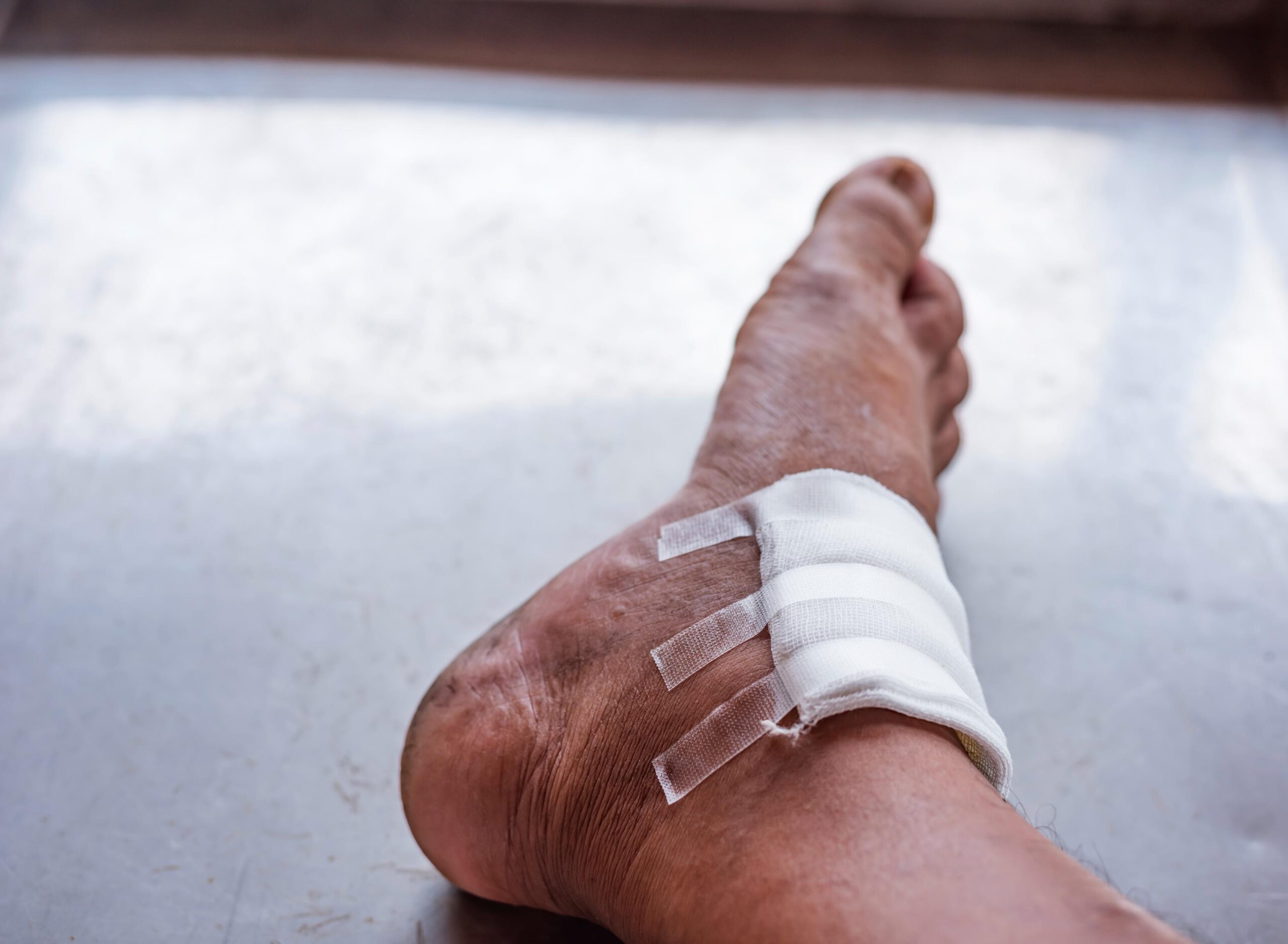When Healing Takes Time, Compassion and Science Walk Hand in Hand
There’s a moment every patient remembers – when they realize a wound that should’ve healed by now… hasn’t.
It’s red. It’s tender. It lingers. And it’s more than just skin deep – it affects confidence, sleep, mobility, and even hope.
For many, that’s the beginning of a quiet battle with a chronic wound – a wound that refuses to close, sometimes for weeks or months. But healing is possible and understanding how to care for these complex wounds can make all the difference.
What Is a Chronic Wound?
A chronic wound is more than a scrape or a cut. It’s a wound that doesn’t move through the normal stages of healing. Instead of progressing, it stalls – often because of poor circulation, underlying health conditions (like diabetes or vascular disease), infection, or repeated trauma to the same area.
Think of the body as a storyteller. Normally, the story of a wound goes something like this: injury, inflammation, repair, and closure. But with a chronic wound, the story gets stuck in the middle chapters. The tissue struggles to rebuild, and the body’s natural signals for repair begin to fade.
These wounds can appear as diabetic foot ulcers, venous leg ulcers, or pressure injuries – and while they can look small on the surface, they often run deeper than what meets the eye.
What Are the Risks of a Chronic Wound?
Untreated or poorly managed chronic wounds carry more risk than many realize.
They can lead to infection, tissue damage, or even hospitalization – but beyond the physical toll lies an emotional one. Chronic pain, limited mobility, and constant worry can take a quiet toll on a person’s spirit.
One of the greatest dangers is waiting too long. Many people try to care for wounds at home, thinking they’ll eventually heal. But chronic wounds often require medical expertise and specialized treatments to restore the body’s balance and promote true healing.
That’s where compassionate, skilled care comes in – care that sees not just the wound, but the whole person behind it.
Identifying a Chronic Wound
How do you know when a wound has crossed from slow healing to chronic?
Here are a few signs to look for:
- The wound hasn’t shown significant improvement after two to three weeks
- There’s persistent pain, redness, or swelling
- The wound leaks fluid or has a noticeable odor
- You notice dark or thickened tissue around the edges
If this sounds familiar, don’t ignore it. A chronic wound isn’t a reflection of poor hygiene or neglect – it’s a signal from the body asking for help. The good news? Today’s advanced wound care techniques can support and restart the healing process, even when it feels impossible.
What Is the Fastest Way to Heal a Chronic Wound?
Healing a chronic wound isn’t about finding a quick fix – it’s about finding the right fix. True healing combines science, patience, and compassion.
1. Wound Debridement: Clearing the Way for Healing
Sometimes, a wound can’t heal because dead or damaged tissue blocks the body’s natural repair process. That’s where wound debridement comes in – careful, clinical cleaning that removes non-viable tissue so healthy cells can grow.
It’s like preparing a garden for new life: old roots must be cleared before new ones can take hold. When done gently and skillfully, debridement reduces infection risk and reawakens the body’s natural healing rhythm.
2. Negative Pressure Wound Therapy (Wound VAC): Turning Science into Healing
Another powerful tool in advanced wound care is negative pressure wound therapy, often called a wound VAC. This therapy uses controlled suction to gently pull fluid and bacteria away from the wound while increasing blood flow and encouraging tissue growth.
Imagine giving the wound a breath of fresh air – a clean, protected environment that promotes faster healing and less discomfort. Studies show that negative pressure wound therapy can dramatically shorten healing times, especially for deep or complex wounds.
3. Mobile Wound Care: Healing at Home
For many patients, travelling to a clinic or hospital can be difficult – especially for those managing chronic illness or mobility challenges. That’s where mobile wound care changes everything.
Mobile wound specialists bring advanced treatments like wound debridement and negative pressure wound therapy directly to the patient’s home. The care is personal, compassionate, and centered on restoring comfort and dignity.
Healing feels different when it happens in a familiar space – when the environment around you supports rest and recovery.
The Heart Behind Healing
Behind every chronic wound is a story – of a life lived, a struggle fought, and a body asking for care.
Healing isn’t just a physical process; it’s emotional and spiritual, too. It requires patience, understanding, and the right hands to guide it along.
When care is delivered with both science and soul, wounds begin to close – and hope begins to reopen.
If you or a loved one is navigating the challenges of a chronic wound, know this: healing may take time, but you are not forgotten. There is a path forward, one that blends medical excellence with human compassion – and sometimes, that journey begins right at home.
Wound Wisdom Tip:
Every wound tells a story. The key is to listen early, act quickly, and trust that with the right care, even the toughest wounds can heal – one day, one dressing, one heartbeat at a time.


